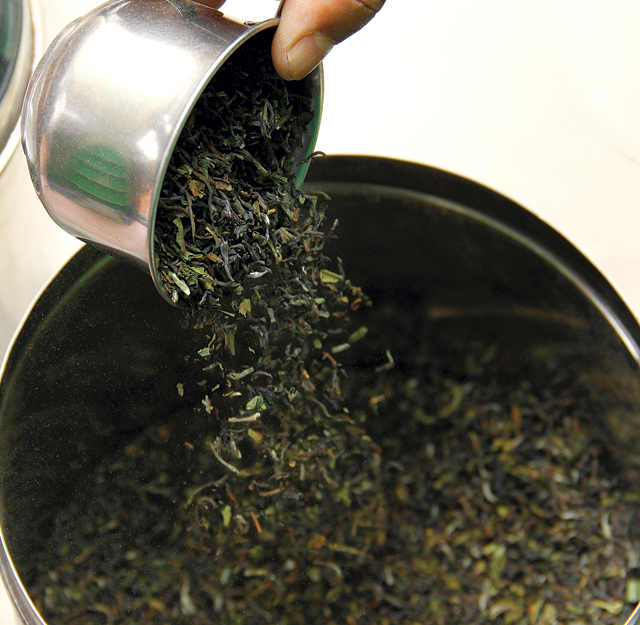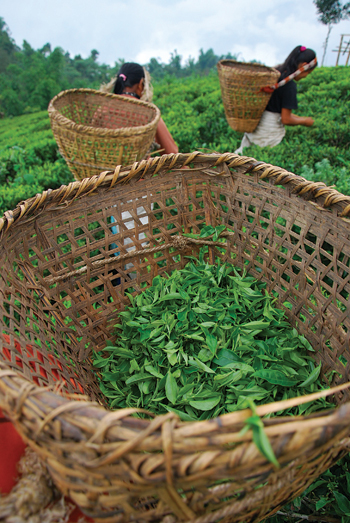Tea is by far the most popular beverage in the world and now Nepali tea is poised and ready to claim a bigger share of the huge global market.
That Prime Minister Jung Bahadur Rana played a major role in Nepal’s history is a fact that can never be disputed. Lesser known is the contribution of his son-in-law, Colonel Gajraj Singh Thapa. While the former made his mark as a harbinger of modernization, the latter distinguished himself by introducing tea to the country. According to one account, the colonel, on a visit to Darjeeling in 1873, was offered tea everywhere he went. So enamored was he by the refreshing beverage that, on his return, he set about establishing two 103 acre plantations that were to be the Ilam and Soktim tea estates. Historians are of the view that it was from seeds presented by the Chinese emperor to Jung Bahadur that tea bushes were first grown in Nepal.

Nepal’s first tea plantation, Ilam Tea Estate, was established just 10 years after the ones in Darjeeling. So, despite commencing within a decade of each other, why has Nepali tea not been able to match the reputation of its Darjeeling equivalent? Perhaps John Taylor of Himalayan Tea Producers Cooperative Ltd. (HIMCOOP) has the answer. Born and raised in a tea garden, Taylor is the third generation of his family to be involved in the business - his grandfather owned a tea garden where his father started a career that spanned over 40 years. If there’s anyone who should know a thing or two about the beverage, it’s John Taylor.
“
 Nepal and Darjeeling tea are both grown in similar climatic conditions. Nepal can now compare with the best of Darjeeling, as Nepal tea, in the last decade, has taken a tremendous leap forward both in terms of production and quality,” he says. “A lot has to do with the entry of the private sector into the tea industry and it is expected that there will be further improvements in the future.” Taylor believes that branding and the use of pesticides are two major factors holding back Nepali tea from gaining a wider market. “Nepal tea needs to be branded with a massive global marketing campaign with the unified support of tea producers, Nepal Tea and Coffee Development Board, concerned donor agencies, and the government,” he suggests. “Pesticide usage has to be controlled with the start of an organic conversion programme to obtain organic certification over a certain period of time. The certification will be a huge marketing tool.”
Nepal and Darjeeling tea are both grown in similar climatic conditions. Nepal can now compare with the best of Darjeeling, as Nepal tea, in the last decade, has taken a tremendous leap forward both in terms of production and quality,” he says. “A lot has to do with the entry of the private sector into the tea industry and it is expected that there will be further improvements in the future.” Taylor believes that branding and the use of pesticides are two major factors holding back Nepali tea from gaining a wider market. “Nepal tea needs to be branded with a massive global marketing campaign with the unified support of tea producers, Nepal Tea and Coffee Development Board, concerned donor agencies, and the government,” he suggests. “Pesticide usage has to be controlled with the start of an organic conversion programme to obtain organic certification over a certain period of time. The certification will be a huge marketing tool.”
According to Taylor, there has been a big change in the types of teas manufactured over the years. “Earlier, it was basically orthodox or black teas but over the last 10 years, there has been a shift to specialty teas like White, Oolong, Handrolled, and Green which have taken over a large share of the market. Previously, the specialty teas came from China, Taiwan, and Japan, but Nepal is becoming a name to be reckoned with as well.”
Studies show that tea helps in preventing cancer, heart disease and diabetes and also aids in weight loss and lowering cholesterol. With health consciousness rising worldwide, one can look forward to Nepal tea being exported to many more countries in the future. The fact that the areas under tea plantations have grown from 233 acres in 1920 to 2153 acres today is an indicator of things to come.











